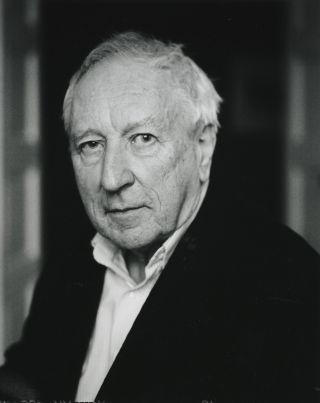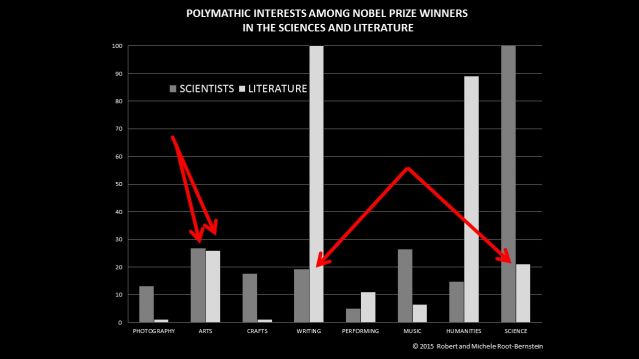
Career
Tomas Tranströmer’s Avocational Polymathy
Tomas Tranströmer, Nobel laureate in Literature, specializes in breadth.
Posted March 6, 2015
Scratch beneath the surface of just about any successful career in science, art, or human affairs and you’re sure to find wide-ranging interests. For some time now we’ve been scratching through the memoirs and biographies of Nobel Prize winners in all categories: literature, peace, economics and the sciences. No surprise, the several-hats tactic turns up time and again. This creative strategy, otherwise known as avocational polymathy, unfolds over a lifetime. And the recent Nobel laureate Tomas Tranströmer provides an interesting case in point—irresistible, in fact, to anyone who is fascinated, like us, with things as different as poems and bugs!

Tranströmer won his Nobel in Literature in 2011 for fifty years of work as a poet. By any measure, he certainly specialized in one field of endeavor. But though it may not be as quickly apparent, he also specialized in breadth. First and foremost, he studied history, religion and psychology in college and worked as a psychologist for most of his life, even as he pursued his poetry career.
Poetry and psychology barely scratch the surface, however, especially if one looks at Tranströmer’s avocations, which largely began in childhood. In a short autobiography of his early years, titled Memories Look At Me (1), Tranströmer writes that he “was absorbed in interests that no normal boy had.” Around the age of 5 or 6 he began drawing “almost uninterruptedly,” filling sheet after sheet of paper with illustrated stories sketched out in a cartoon-like shorthand. He took a drawing class—“voluntarily” he notes—and sketched the fish, sea urchins, crabs, and shells that so fascinated him at the Natural History Museum in Stockholm. Between the ages of 11 and 15 he collected beetles and other insects with great zeal, carefully mounting and preserving his specimens. As an older teen, he abandoned his entomology as “other competing interests, mostly artistic, forced their attentions on me.” Around the age of 13 or 14, he had fallen in love with music and “began to hammer at the piano in earnest.” A few years later he started to write poetry.
Most children flirt with a range of activities, as they seek out those that best suit their strongest interests and talents. Drawing, story-telling, piano-playing, bug collecting—in and of themselves, these activities are not unusual in childhood. What sets Tranströmer’s example apart is the intensity of these interests, their duration, and the way they continued to inform his life through adulthood.
Take for example Tranströmer’s engagement in natural science. Recalling his summers spent collecting beetles and butterflies on the Swedish island of Runmarö, he writes of his immersion in the “great mystery” of nature. As he added to his collections, “inside my skull grew an immense museum” that he compared to the real one he knew so well. There was “a kind of interplay” between the imaginary museum in his head and the real one in Stockholm—and it came full circle when, after he received the Nobel Prize, the real Natural History Museum placed his childhood insect collections on exhibit. Around the same time, a new species of beetle found in Sweden was named in honor of the poet.
The interplay between the imaginary and the real informed other childhood play activities for Tranströmer-- he spent one summer, for instance, in a kind of worldplay, tramping through the woods of Runmaro as if they were the jungles of Africa. (See a description of this play here.)
The same interplay stuck with him into adulthood, informing much of his poetry, as did the bugs. In one of his collections of poems, it has been noted, some 21% featured insects. Music, too, made its way into the poetry, as Tranströmer composed verbal parallels to musical patterns of thematic variation, even at times, to specific pieces of music. The long poem, "Baltics," was, in this regard, his “most consistent attempt to write music.” (2) Even after a stroke in 1990 left him aphasic and paralyzed on his right side, Tranströmer continued to play piano with his left hand at an accomplished level and, indeed, to give piano concerts. Fortunately, there are about 500 piano compositions written for the left hand only!
As surprising as Tranströmer’s several-hats creative strategy may seem, it is not unique. When we look at Nobel laureates in the sciences and in literature, we find in spades the multiple interests of the polymath. Overall, Nobel laureates display three times more avocations than the general public. More to the point, we find that these scientists and writers share about similar levels of interest in the visual arts. And we find that Nobel laureate writers have science interests at about the same rate as Nobel laureate scientists have writing interests.

What does this mean for the rest of us? Contrary to what your boss, your teacher, or even your parents may have told you, specializing is only one road to success; another is specializing in breadth.
(c) 2015 Michele and Robert Root-Bernstein
Notes and Other Sources
1. Tomas Tranströmer, Memories Look at Me, A Memoir. Trans. Robin Fulton. (New York: New Directions Books, 2011), pp. 32-34. First published in English in Tomas Tranströmer, The Great Enigma: New Collected Poems, 2006. First published in Sweden as Minnena ser mig in 1993.
2. Cited in Tomas Tranströmer, The Great Enigma, New Collected Poems. Trans. Robin Fulton. (New York: New Directions Books, 2006), xvii. The foreword to this collection is written by the translator.

